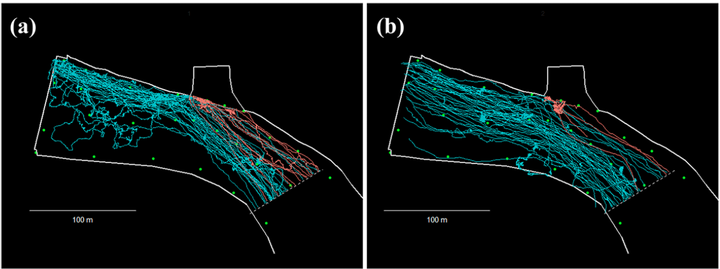
Abstract
There is no generic solution to establish safe passage of downstream‐migrating fish passed hydropower facilities, and mitigation measures are species and site specific. Development of solutions is thus often based on “trial and error,” and modellingbased approaches may significantly reduce cost and time to arrive at successful mitigation. Here, we explore such an approach by combining data on fish migration and hydraulic modelling. First, we performed a positional telemetry study at a dammed section of a Norwegian river, where 100 Atlantic salmon smolts were tagged to track their downstream movement at the vicinity of a hydropower intake channel and bypass gates. An explanatory model was developed to explore mechanisms of migration route, into the intake towards the turbines or through the bypass gates. Next, flow conditions during the smolt run was numerically modelled to explore the physical environment of the tracked smolts. The joint results from the two approaches supported the general assumption that downstream migration is strongly influenced by flow patterns and showed that fish entering the study site closer to the riverbank where the intake channel is located were more likely to enter the intake due to the strong currents towards the intake. Finally, a suite of measures to guide salmon smolts past the hydropower intake were proposed based on the findings and local conditions and tested by hydraulic modelling. We found that most of the measures that were likely candidates for field trials would most likely fail at improving safe passage, and only a rack‐type guiding boom was promising. The presented combination of telemetry migration data and hydraulic modelling illustrates the value of evaluation of mitigation measures prior to implementation.